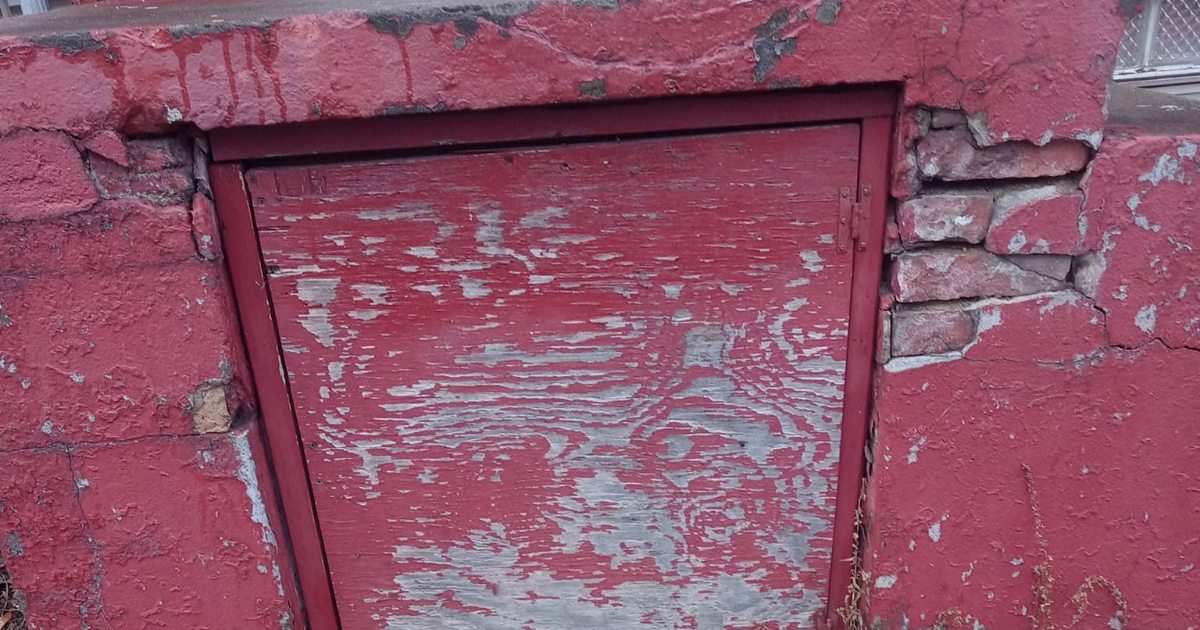See if You Can Identify This Vintage Home Essential!

Source: Facebook / Jamzs Rankin
In the not-so-distant past, when winter’s icy grip tightened its hold on neighborhoods across the country, a familiar sight adorned the back alleys and basements of countless homes – the trusty old coal chute. Long before the era of central heating and gas furnaces, families relied on this ingenious mechanism to keep their homes warm during the chilly winter months.
The coal chute, a simple yet vital component of homes from the late 19th to the mid-20th century, was a portal to warmth and comfort. It was a fixture that now stands as a symbol of a bygone era, a time when communities were built on hard work, resourcefulness, and the crackling warmth of a coal-burning stove.
The coal chute was more than just a utilitarian feature; it was a connection to a lifestyle that has slowly faded into history. Picture it: a narrow alley behind rows of quaint houses, a delivery truck pulling up, and a burly coal delivery person heaving sacks of coal onto their shoulder. The rhythmic clinking of shovels, the dusty haze in the air – these were the sights and sounds that defined the coal chute experience.

The coal chute was typically a small door, often made of metal, set into the foundation or exterior wall of a house. It opened into a chute that descended into the home’s basement. This simple yet effective design allowed coal to be delivered directly into the home, saving homeowners from the arduous task of lugging heavy sacks through the front door and down into the cellar.
For families who relied on coal for heating, the arrival of the coal truck was an event. It meant warmth, it meant survival through the bitter cold, and it meant a cozy living room with a roaring fire. The coal chute was a lifeline, delivering not just fuel for the stove but a sense of security and well-being.
The ritual of coal delivery was a communal experience, a shared aspect of life in neighborhoods across the nation. Neighbors would gather in their alleys, chatting and exchanging pleasantries as the coal delivery person made their rounds. It was a time when a simple gesture, like lending a helping hand to unload a delivery, was a way to strengthen the bonds of community.

Inside the homes, the coal chute led to a dusty but crucial space – the coal bin in the basement. Families stored their coal in this designated area, ensuring they had a steady supply to keep their stoves burning. The coal bin became a familiar feature in households, its presence a constant reminder of the resourcefulness and resilience of those who depended on coal for warmth.
As technology advanced and cleaner, more efficient heating methods emerged, the coal chute gradually disappeared from the urban landscape. Gas and electric heating systems replaced the coal-burning stoves, and the once-familiar coal delivery trucks faded from memory. The coal chute became a relic of the past, a reminder of a time when communities were bound by shared experiences and the simple act of keeping warm brought people together.
Today, the coal chute exists primarily in the memories of those who lived through its heyday. For them, the clattering of coal against the chute, the dusty aroma of the basement coal bin, and the warmth emanating from the stove are indelible images etched into the fabric of their nostalgic recollections.

Though the coal chute may no longer be a common sight, its legacy lives on in the stories told by those who remember the time when a simple chute delivered not just fuel, but a sense of community, resilience, and the enduring warmth of a bygone era.
